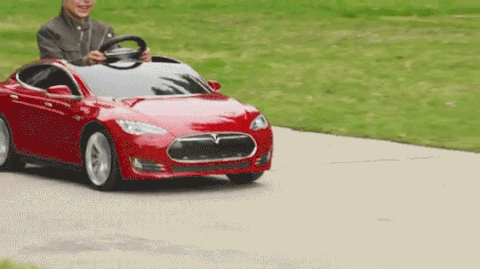
This sounds totally awesome. But at what cost? Have you thought this through, knowing the facts, the truth, the spin, and we don’t mean spinning tires. We mean the woke elites pushing this green energy concept, by using the biased influence of most forms of media. We want to spend just a few minutes exploring the downside of owning an electric vehicle, the side those who are pushing these vehicles don’t want you to know about and will do everything they can to hide the negatives while only sharing the positives. Some day we will be able to step into our own bubble transporter at home and be transported quickly and safely to any destination we want . . . but that day has not yet come and is many decades in the future. It takes time to develop new technologies, and that process cannot be accelerated beyond our ability learn, experiment, test hypotheses, and bring concept into reality. Someday most of us will be able to drive or ride in a transportation device powered by a totally clean energy source, and that “clean energy source” includes “clean” all the way back to the power’s source.
Let’s be clear. We have documented this before in a previous blog that the source of power for all “clean energy vehicles” comes mostly from fossil fuels. You may think loading your EV with energy is making the world a “greener” environment, but the reality is that without fossil fuels, your EV will have a hard time powering up, or going anywhere. Currently 80% of our Nation’s power comes from coal or oil powered facilities. “In 2019, 80% of domestic energy production was from fossil fuels, and 80% of domestic energy consumption originated from fossil fuels.” “79% in 2021.”(US Energy Information Administration, September 14, 2020.) Nuclear accounts to approximately 8% of our Nation’s power generation. Renewable resources account for about 12% of our Nation’s power generation. The same source quoted above also provides additional information. Approximately 40% of renewable energy comes from “biomass waste – 4%, biofuels – 19%, wood – 17%”. The rest of renewable energy comes from “geothermal – 2%, solar – 12%, hydroelectric – 19%, wind – 27%”. The contribution of fossil fuels to our Nation’s energy generation comes from “natural gas – 32%, petroleum – 36%, nuclear – 8%, coal – 11%”. (US EIA, April 2022.) We need to point out that “solar” is not a 24-hour generation, obviously. Peak generation occurs only during a few short hours each day, and normally subside substantially about the time most people arrive at home from work and want to charge their EVs. “Wind” is also a non-constant source of power, Wind speeds needed for power production range from 7 to 55 mph (UNC-TV, Frank Graff). Few if any places on earth have a constant wind speed maintained within that range, so power generation is not optimally continuous. Solar and wind sites require enormous acreage and are eyesores to a natural landscape. Both solar and wind power devices are largely dependent upon China for materials and production. Solar panels are subject to adverse weather precipitation and dust, whereas wind turbines are a threat to airborne foul. Have you considered where the materials for EV batteries come from? Do you realize children are used as slave labor in Africa to mine these rare earth materials, as the natural landscape is destroyed in the process. “Many of the mines use child slave labour. And I’m afraid that, as car makers go electric and demand sky-rockets, more kids are going to get sent underground. And that means more are going to die. Small wonder cobalt is called ‘the blood diamond of batteries’.” “But what do you use instead? The answer is nickel, and while no slave labour is used to dig this out of the ground, it’s not what you’d call a clean process. According to a report in The Guardian, of all places, what you have around a nickel mine are: ‘Plumes of sulphur dioxide choking the skies, churned earth blanketed in cancerous dust, rivers running blood-red . . .’. And that’s before we get to all the deformed babies. There are reports of deformed babies being born near the cobalt mines and higher rates of deformities and respiratory problems linked to nickel mining pollution.” (The U.S. Sun, Jeremy Clarkson, Feb 20, 2021.) The Boston Globe writes: “Empty Promises Won’t End Green Slavery. The lack of supply chain transparency creates a convenient excuse to ignore the role of modern slavery in the renewable energy transition.” (Oliver McPherson-Smith, October 3, 2022.)
The Lithium News, October 5, 2022, has highlighted some EV limitations that you may not have considered. Batteries are susceptible to temperature extremes. The more the extremes, the more the degradation in battery storage and life will be experienced. Batteries should last 100,000 miles, maybe more, but there are no guarantees. Keeping the car fully charged is not recommended, nor is allowing the battery to fully discharge, as this can cause problems with other systems. Fast charges are not always the best idea, as this can cause wear and tear, and can lead to premature failure. “Repeatedly using launch controls or similar features drains the battery quickly and will eventually degrade performance and battery capacity.” One should always consider your ability to be able to recharge your EV. Currently there are only 47,000 charging stations, and 118,000 charging points (upstream/EETimes.com). One may have to wait in line to recharge (assuming you’re not in California and subject to restricted charging hours), and once hooked up, it will take longer than filling up a tank of gas. Your fully charged vehicle will also have a limited range, and your vacation may be planned around charging stations and time spent siting in your car while it is being re-charged. The previous source also reported “poor to minimal protection” from hacking, that individual’s cars could become a backdoor into the grid system, powering them on or off to destabilize the grid. Fox Business reported on October 10, 2022, that not only are car computers hackable, but so are the charging stations. “Nicoletti: Hackers will find a way to grab them [charging stations] and take them apart to find your information.” It was also reported that charging cables contain valuable materials that could be cut off and removed from charging stations to support criminal pursuits.
Let us now turn our attention to other facts having a direct influence on your purchase of a new EV. The most obvious one is initial cost. You will pay more for your EV than any other gas-powered vehicle. “According to the United States Natural Resources Defense Council (NRDC), the average sticker price on a new electric vehicle is approximately $19,000 more than that of a new gasoline-powered vehicle.” (Compare.com; Nick Versaw, January 4, 2022.) Oh, you say, but I may get a $7,500 credit! Well, that may be true, but what you may get back on the back end, each one of us pay through increased taxes and National debt on the front end. Talking about money, consider the replacement cost of a Tesla Model S battery. How does $20,000 hit you? Better buy a Nissan Leaf, as its battery only costs $2,700! (Greencars.com.) How about the cost to insure this new EV of yours for one year: Tesla – $4,066, Chevy Bolt – $1,830, Nissan Leaf – $1,804, Ford F150 Lightning – $1,960. (Bankrate.com.)
Recently, we have heard a lot about EV fires. U.S. Agency opened a probe into electric vehicle batteries since 2020 (Tom Krisher; April 5, 2022). On Fox Business on October 13, 2022, Elizabeth McDonnald mentioned a Tesla in a junk yard had to be buried in dirt to put out its battery fire. Seemingly self-combusting. It was also reported that it took 40 fire fighters to put out an electric car fire in China. When an EV is submerged or subjected to high volumes of water, you can develop short circuits within the battery pack. The vehicle may sit dormant, may not show any signs of “thermal runaway” or off-gassing for moments, days, weeks, or even a month. Multiple fires have already been reported. Best practice is to isolate the car and let it burn. Throwing water on it can allow the vehicle to off-gas toxic and highly flammable gasses, and in an enclosed area, could become explosive (Dalan Zartman, Veteran firefighter; Rescue Methods LLC, President and Founder).
Finally, let’s once again take a look at all those items on an EV that are dependent upon fossil fuels. Refer back to our blog posted on March 20, 2022, titled “Are You Prepared To Live Without Oil?” You may drive an EV, but it won’t drive or look the same without Road Asphalt, Carpets, Dyes (used to color items), Sport car bodies, Tires, and Upholstery. It’s also likely that windshield wipers and squirt tubing could be added to this list, along with plastic lenses and body trims.
You may choose to drive an EV, but it will cost you more in the short-term and in the long-run, and there is no way you can avoid buying any EV that is totally void of fossil fuel-based products. Your “Green” vehicle comes to you through slave labor, by the destruction of natural environments, and with the blessings and control of the Chinese Communist Party. Do not be swayed by promises of more charging stations or tax credits. Do not become mesmerized or succumb to pressures applied by state or federal mandates, tyrannical dictates, or the allure of a “shiny new object.” Your FREEDOM and LIBERTY to drive what you want is at stake. Speak loudly and firmly in opposition to those who seek only your submission to their will and agendas.
